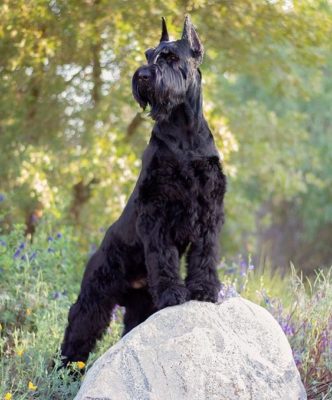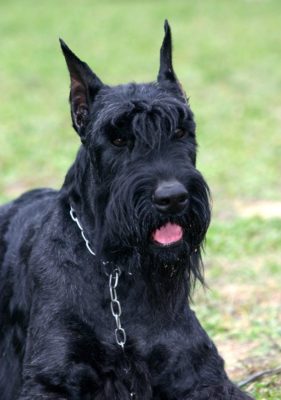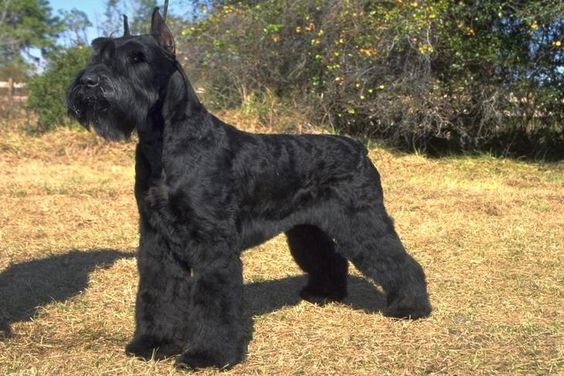Giant Schnauzer
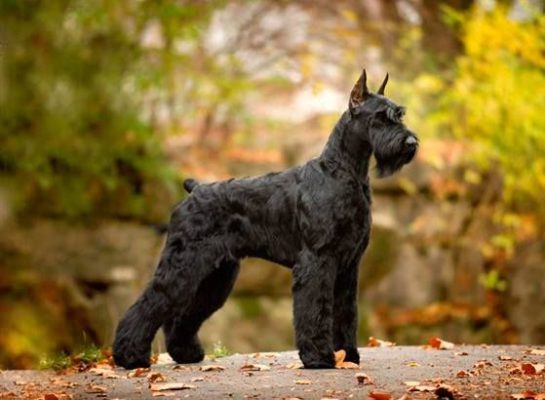
Dogs need only one master to whom they are loyal. All other family members they will protect but will not obey as well as their authoritative master. Giant Schnauzers treat children well and can be great babysitters. They tend to show aggression toward strangers. However, it is necessary to fight their anger in time and teach them to control their emotions early.
Table of Contents
Breed Information
| Another Name | Munich Schnauzer, Munchener, Russian Bear Schnauzer |
| Origin | Germany |
| Height | 60-70 cm |
| Weight | 35-47 kg |
| Fur | Stiff, wire-like, thick |
| Color | Black, “pepper and salt” |
| Lifespan | 12-15 years |
| FCI Classification | Pinscher and Schnauzer – Molossoid and Swiss Mountain and Cattledogs |
| Group | Guard dogs, protection dogs |
| Price | $500-1000 |
Breed Photos
Origin History
The Giant Schnauzer comes from Germany, from the lands of Württemberg and Bavaria. Dogs were good at a wide variety of jobs. They guarded houses, herded sheep, and protected herds from wild animals. Thanks to their functionality, they earned wide popularity in their native lands.
Giant Schnauzers were even painted next to Princess Elisabeth of Bavaria. The breed became very popular after an exhibition in 1909, where 29 Giant Schnauzer dogs were shown.
The dogs officially received their standard of appearance and modern name in 1923. Because of its large size, the dog is often called a giant schnauzer.
Appearance
The physique of the Giant Schnauzer is strong, compact, muscular. The dog’s appearance is noble, slender, which evokes a sense of trust and security around him. The body is somewhat square. The height of the dogs can be from 60 to 70 cm. Weight ranges from 35 to 47 kg.
The tail and ears are often trimmed in countries where it is allowed. The Giant Schnauzer’s coat is thick and stiff, and there is also a dense undercoat. The ears and forehead have a slightly shorter coat than the body. The fur is long on the muzzle, forming a beard, and some eyebrows overhang somewhat at the top of the eyes.
The only colors officially allowed by the standard are black and “pepper and salt”. But the muzzle must remain as dark as possible when coloring “pepper and salt”.
Character
Dogs need only one master to whom they are loyal. All other family members they will protect but will not obey as well as their authoritative master. Giant Schnauzers treat children well and can be great babysitters.
They tend to show aggression toward strangers. However, it is necessary to fight their anger in time and teach them to control their emotions early.
The Giant Schnauzer is very hardy, intelligent, and prone to being on his own. Therefore, he often needs to be reminded of obedience and that walking, eating, and playing should be strictly on schedule.
Thanks to their endurance and intelligence, dogs can easily live in the same territory as other animals and not hurt them. The Giant Schnauzer likes to be socialized long and often.
Care
The best place for your dog to live would be in a home where he has plenty of space and space for exercise. If you live in an apartment, you should be prepared for long walks. Approximately 2-3 hours a day is needed for your dog to be outdoors.
The dog is very active and robust, so long runs are recommended. Grooming is not hard if you are willing to take the time to look at your pet. Regularly wipe his fur around his mouth after meals because it is long and can get dirty. Trim his coat systematically around his eyes to keep it out of his eyes. Brush his coat once a day and cut off tangles, if any.
Giant Schnauzers’ significant advantage is that they hardly ever molt, but once a year, you can get a haircut from a professional.
Training
Train your dog from an early age. Pay a lot of attention to your pet’s aggression and anger because they tend to overexpress their defensive qualities.
It is better to train a Giant Schnauzers after a long walk because they will discharge their excessive energy and be ready to memorize commands.
Dogs of this breed have a perfect memory. They easily remember human faces and will not bark at people who have already been introduced to them once.
It is vital to continue to train your dog even when he shows no interest. After all, this is not a decorative breed and requires training.
Common Diseases
Dogs are in good health, but diseases such as diabetes, lipoma, cataracts, hip dysplasia, melanoma, and hypothyroidism can occur. It is better to keep Risenschnauzers in the house in winter, as their urinary system is not very strong, and there can be kidney disease.
Nutrition
The diet should exclude fatty foods, smoked foods, salty foods, and sweets. The basis of the diet should be raw meat, dairy products, vegetables, cereals. You should also not forget about vitamins and minerals, which can be added to your daily diet.
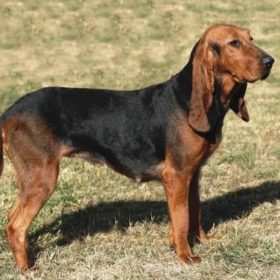 Bruno Jura Hound
Bruno Jura Hound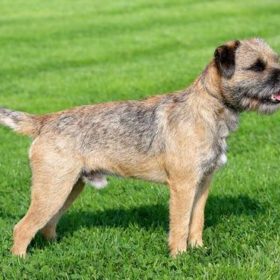 Border Terrier
Border Terrier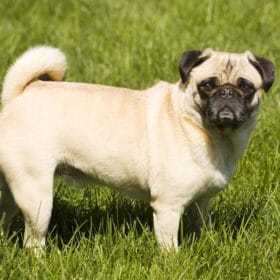 Pug
Pug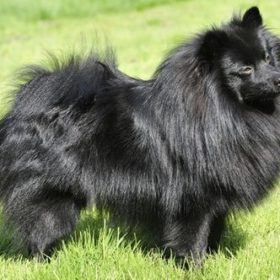 German Spitz
German Spitz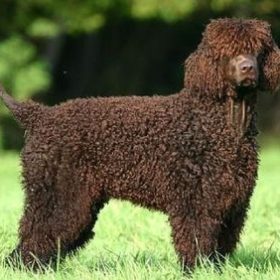 Irish Water Spaniel
Irish Water Spaniel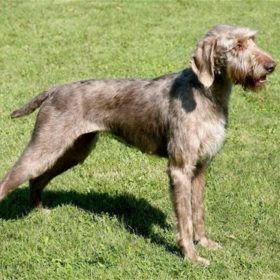 Slovak Rough-haired Pointer
Slovak Rough-haired Pointer